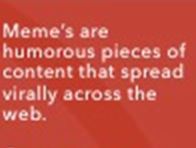MISTAKE MONDAY for April 9: Can YOU spot what’s wrong?
Can you spot what’s wrong in the image below? Please post your answer as a comment.

This one didn’t jump out at me when I reviewed the image. Will you do better than I did?
I post these challenges to raise awareness of the importance of proofreading.
MISTAKE MONDAY for April 2: Can YOU spot what’s wrong?
Can you spot what’s wrong in the image below? Please post your answer as a comment.
Here’s a key piece of information: I viewed this item when I was buying something from a website in February 2018. Without this information, you might not realize that anything is wrong with this week’s Mistake Monday item.

I post these challenges to raise awareness of the importance of proofreading.
Let’s visit apostrophe hell
I’m not the only person who dislikes misplaced apostrophes (or should I say apostrophe’s?). There’s a Flickr page called Apostrophe Hell with photos of apostrophe abuse. Misused apostrophes turn up frequently on Mistake Monday on this blog. Below you’ll see some examples. I share them to remind all of us—including me—to pay attention to apostrophes when writing and proofreading.
Its vs. it’s
It’s vs. its is a classic example of where apostrophes are often abused, as you’ll see in the Mistake Monday examples below. Most often there’s an apostrophe where it’s not needed.


Sometimes the mistake goes the other way. A sentence lacks the apostrophe needed to create the contraction for “it is.”

Other possessives
You need an apostrophe to form the possessive for most words other than “its” and “yours.” The proofreaders for the images below didn’t remember that.


Contractions
Apostrophes are also important to forming contractions.
For example, “let us” becomes “let’s”—at least that’s what should happen.
Random insertion of apostrophes
Sometimes people seem to insert apostrophes randomly. What was this person thinking?

MISTAKE MONDAY for March 26: Can YOU spot what’s wrong?
Can you spot what’s wrong in the image below? Please post your answer as a comment.

Want a clue to this week’s big mistake? Read my post on “Bloggers’ top two punctuation mistakes.” It doesn’t discuss this exact mistake, but it’ll point you in the right direction.
I post these challenges to raise awareness of the importance of proofreading. I make mistakes, too. Mistake Monday keeps me vigilant. After all, I don’t want to make any more mistakes worthy of posting here.
MISTAKE MONDAY for March 19: Can YOU spot what’s wrong?
Can you spot what’s wrong in the image below? There’s more than one problem this week. Please post your answer as a comment. 
Here’s a clue to one of the mistakes. Some words are commonly confused with other words that sound similar, but have different meanings.
If you can’t find the confusing word in this week’s Mistake Monday example, check out “Top 30 Commonly Confused Words in English.” If this word appears frequently in writing that you proofread, consider adding it to a checklist of words that you review more carefully than others.
I post these challenges to raise awareness of the importance of proofreading.
MISTAKE MONDAY for March 12: Can YOU spot what’s wrong?
Can you spot what’s wrong in the image below? Please post your answer as a comment.

Once again, here’s an error in a major newspaper. I suspect that text, such as headlines and captions, that isn’t written by the reporter may be particularly prone to becoming fodder for Mistake Monday. Do YOU have a theory explaining these errors?
I post these challenges to raise awareness of the importance of proofreading. I still struggle with proofreading my own work.
Writers, eat your greens!
Eat your greens! For many people, that means eating foods that they don’t enjoy, but which are good for them. In the writing world, I think a comparable challenge is proofreading your text and checking on fine points of grammar. Here are some steps I suggest to help you eat your metaphorical greens.
1. Finish your drafts early
When you finish writing something before its deadline, you can approach it with fresh eyes for a final review. With fresh eyes, you’re more likely to catch errors of reasoning, grammar, or other areas.
2. Use tools and people to help you proofread and copyedit
It’s not easy to proofread or copyedit your own work, as my husband reminds me when he proofreads my monthly newsletter.
Online tools that check your spelling, grammar, and wordiness can complement your work. My recent post on “The compelling white paper that wasn’t” includes links to tools.
However, online tools won’t catch every mistake. For example, it won’t catch the investment professional with the title “portfolio manger” instead of “portfolio manager” with the additional “a.” That’s why it’s good to get a colleague or professional proofreader to review your work. Also, consider using the tip I describe in “Why I love Adobe Acrobat Pro for proofreading” to catch errors that eyes tend to gloss over.
If organization—not grammar—is your stumbling block, use my first-sentence check.
3. Have reliable references handy
You can’t buy or find online one of the most powerful tools for catching your errors. That’s a customized checklist that lists your most common errors. For example, if you often make “Bloggers’ top two punctuation mistakes,” add them to your checklist.
My favorite online resources include:
- Grammar Girl
- Purdue Online Writing Lab
- GrammarBook
- Google—Check the credibility of the source before you act on information you find on Google
If you have a budget, you can subscribe to online resources from AP Style or the Chicago Manual of Style. I have mixed feelings about AP Styleguard software.
You can’t find all of the answers online. That’s why my library includes “My five favorite reference books for writers.”
The result?
If you follow these three tips, you’ll produce cleaner, better organized writing. That’ll make your writing more compelling and effective.
Tip for bloggers
Bloggers sometimes ask me where I get my ideas for posts on this blog. Today’s post was inspired by the image that accompanies it. When the image appeared as a free download from Depositphotos, a website I use to source some of my photos, it made me think about how many people don’t like greens. My mind quickly bounced to the tasks that writers don’t like.
Images can be a great source of blog post ideas. For more ideas on how to find inspiration in images, read “Photo + Mind Map = Blog Inspiration.”

Learn more about my financial blogging class!






